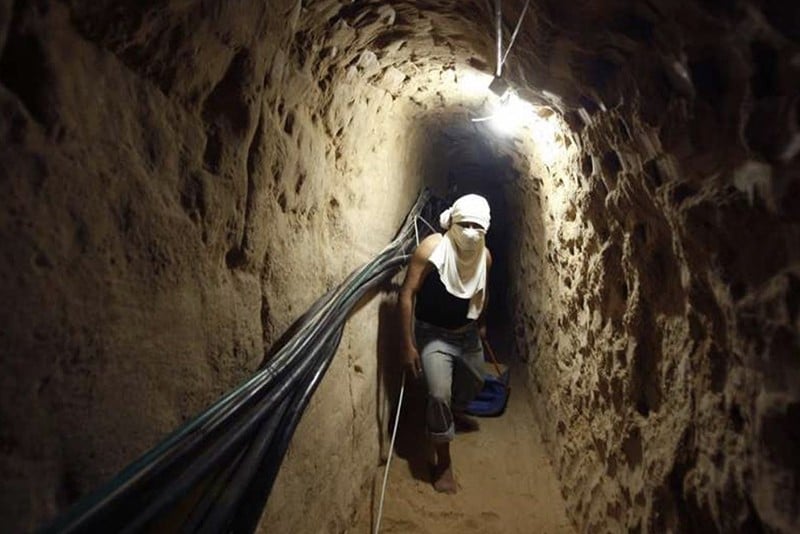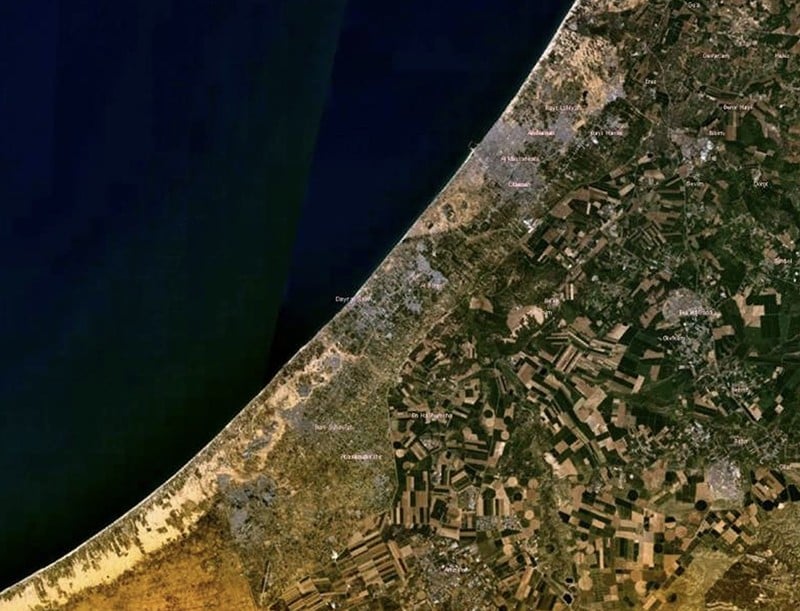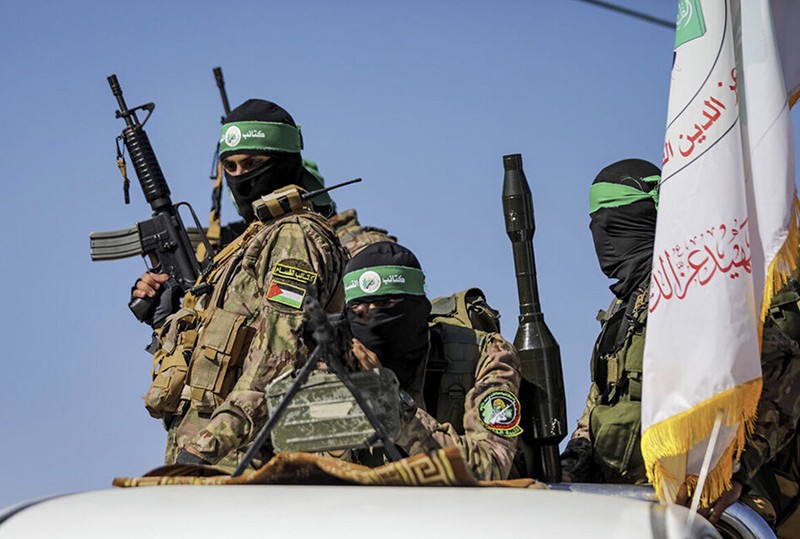The US publication Axios estimates the Israeli attack force at 20,000, while the number of Hamas (al-Qassam Brigades) fighters is 40,000. Fighting continues in the Gaza suburbs as well as Beit Hanoun. The Israeli army has failed to capture another town, Khan Yunis. Palestinians have also blocked an Israeli landing attempt at Rafah Beach.
Israeli Defense Minister Yoav Galant said the ground offensive in the Gaza Strip would last for months.
 |
| Hundreds of kilometers of tunnels built by Hamas in Gaza |
According to the US Modern War Institute (MWI), Hamas militants have learned many lessons from recent events in Ukraine (the siege of Mariupol). In addition, the Palestinians have studied in detail the tactics of fighting in cities with similar population densities such as Baghdad in 2003, Fallujah in 2004, Mosul and Marawi in 2017.
As for the IDF, they have experience in conducting ground operations in Gaza and against Hamas. The last time Israel entered the Gaza Strip was in 2014. To carry out the attack, Israel mobilized 75,000 reservists, and sent 3 divisions into the Palestinian territory.
At that time, the IDF's main goal was only to destroy the underground tunnel network, not to completely destroy Hamas as it is now, but the operation lasted nearly two months. The number of Israeli soldiers wounded and killed was 536.
MWI believes that operations in the Gaza Strip will largely shape how urban or defensive warfare is conducted in the coming years, specifically as follows:
First , the widespread use of missiles even in densely populated areas. As early as 2003, during the battle for Baghdad, Iraqi forces destroyed the headquarters of a US Army brigade in the city. And a surface-to-air missile shot down an American A-10 Thunderbolt II fighter jet over the Jumhuriya Bridge.
Hamas has an estimated missile arsenal of several thousand. Israeli Merkava IVs were shot down by Yasin-105 ATGMs in the recent battle for Beit Hanoun.
Second , the use of unmanned aerial vehicles (UAVs) is even more widespread than missiles. Neither the Americans in 2003 nor the Israelis in 2014 faced such a large and diverse array of drones, from suicide UAVs to commercial UAVs converted to drop bombs.
Hamas has released numerous videos of its forces using drones, including large ones similar to Iran’s Shahed-136. MWI writes in its report that in all urban battles, UAVs will now be actively used to precisely attack targets, surround targets and transmit images of enemy troop movements.
 |
| Gaza Strip from satellite |
Third is the extensive use of underground tunnels and fortifications. It took IS militants in Mosul two years to dig tunnels, which they used to move between buildings and fighting positions. Over 100,000 Iraqi troops were involved in retaking Mosul from IS, but the city was almost completely destroyed. The use of underground systems for defense was also used by the Ukrainian army in Mariupol (Azovstal Steel Plant) and Bakhmut (salt mine).
In 2021, during Operation Guardian of the Wall, Israel destroyed nearly 100 kilometers of tunnels under the Gaza Strip. It can be expected that Hamas, as in 2014, will use the tunnels for offensive purposes by catching the enemy off guard, or for defensive purposes when moving between fighting positions to avoid IDF airstrikes.
Fourth , the active use of anti-tank weapons. To enter the city, the armed forces must have engineering vehicles and well-protected tanks. In 2014, the IDF faced fire from various anti-tank missiles: “Malyutki”, “Konkursy”, “Bassoons”, “Cornets”, as well as RPG-7 and RPG-29.
 |
| Hamas fighters |
These shoulder-fired weapons are quite effective, easy to transport and conceal. During the Battle of Fallujah in 2004, an American battalion participating in the breakthrough of enemy defenses lost six M1A2 Abrams tanks to these anti-tank missiles. When defending Mariupol in 2022, the Ukrainian army used Kornets, NLAWs, Javelins.
Fifth is the impact of strong defensive positions and the involvement of snipers. Hamas will conduct an active defense based on close combat. This tactic relies on fortified positions (buildings made of concrete and steel, often with multiple basements and tunnels) and snipers.
In 2014, Hamas deployed 2,500–3,500 troops to defend Gaza with mortars, shoulder-fired missiles, rocket-propelled grenades, machine guns and small arms fire, mainly from well-defended positions.
The history of urban warfare shows that it can take weeks, even months, to capture a position that is considered a stronghold. During the Battle of Stalingrad in 1942, it took a German division nearly two months of fighting to capture a four-story building known as the Pavlov House. In the liberation of Marawi, it took the Philippine Army weeks to clear several isolated rebel buildings.
Source


































































































Comment (0)